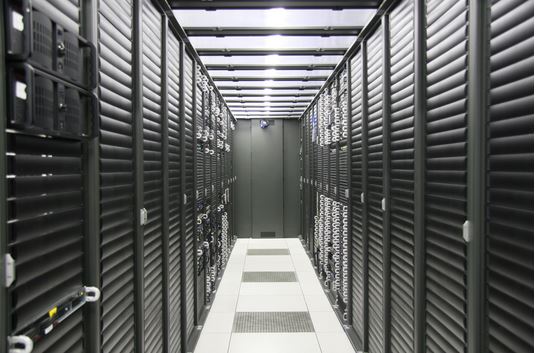Keeping your cool in datacentres
A perennial issue in the management of datacentres is finding efficient solutions for keeping the equipment cooled to within its operating temperatures. In all but the coldest of countries, ambient air temperature is too high to provide adequate cooling; this means that Computer Room Air Conditioning (CRAC) is required.

However, in such a competitive industry it's vital that datacentre managers are able to cut energy costs by harnessing the conditioned air in the most efficient methods possible.
Specifying Retex Cool Row cooling systems for even distribution of cooled air can help cut energy costs in CRAC applications by up to 40 percent.
Due to the large amount of energy required to run a datacentre, the equipment can quickly become hot. In a tightly packed cabinet, where space is limited, the restricted airflow can mean the temperatures quickly reach a level where there is a very real risk of breakdowns occurring. This could put a company out of business or, in some extreme cases, lives in danger. In order to protect equipment from these high temperatures, datacentre engineers work hard to install hi-tech cooling systems. However, in order to remain competitive, these systems must operate as efficiently as possible.
Unless the datacentre is located in an extremely cold location - for example many new datacentres are being built in Scandinavian countries - it is necessary to cool air before it passes over the racks. Standard CRAC systems are capable of cooling the air to a suitable temperature, but they are inefficient as they cool the entire room. To improve the system's efficiency, most datacentre managers choose to employ cold aisle containment techniques which manage the flow of the cold air and prevents any warm air from within the rest of the room raising its temperature.
Cold aisle containment is typically considered to offer the most effective way of quickly guaranteeing the lowest temperatures. The aisle to which the racks' fronts are facing is contained and fed with cooled air. This means that it can't mix with the warm exhaust air that has passed through the racks. Due to the fact it is the cold aisle that is contained, it is possible to control the feed of the cold air directly into the rack inlets, improving efficiency in the air flow and ensuring that the temperature at which the air enters can be tightly controlled.
Even within cold aisle containment systems it's possible to improve the efficiency of design with suitable air management techniques. Rather than using a single inlet for the cooled air, smart distribution systems, like the Cool Row from Retex, allow the air to be dispersed into the room evenly. Stood between the racks, the Cool Row cabinets feature 8 EC fans which provide variable speeds in accordance to thermal needs. This means that air is distributed into the cold aisle evenly and at the quantity required.
The Cool Row is compatible with most popular cold aisle containment systems, including the Retex Datalogic cabinet rooms and can be quickly assembled upon delivery. They are designed to provide cooling for medium to high density applications; a single unit is suitable for up to 35KW. The towers are easily maintained and the filters and fans can be replaced whilst in use. Each unit only consumes 770W at full power, further adding to the overall efficiency of the datacentre.
Where CRAC is being used to cool the air in a datacentre, cold aisle containment with Cool Row cabinets installed can cut energy costs by as much as 40 percent. This is achieved through the simple process of directing the air towards the rack inlets.
Contact Details and Archive...